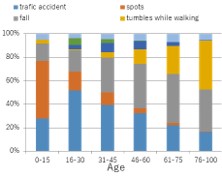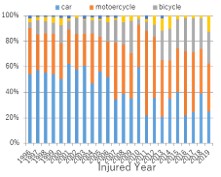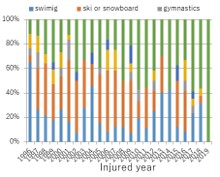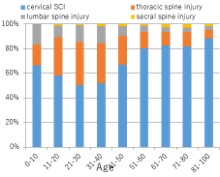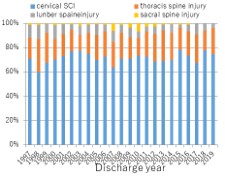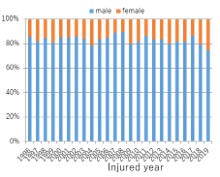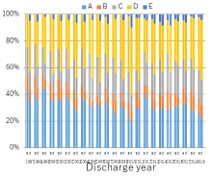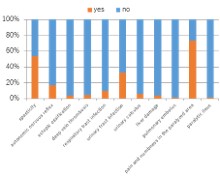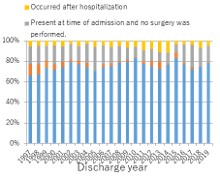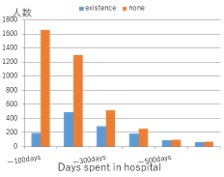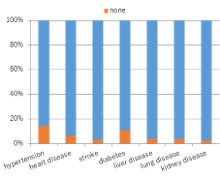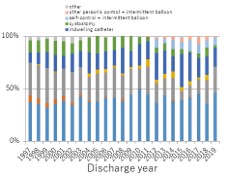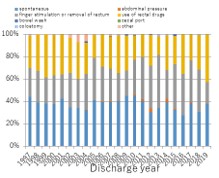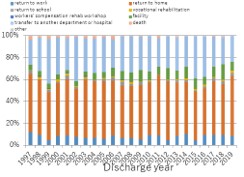|
Number of registration by discharge year
5569 data were registered by fiscal year 2019, and 180 additional data were registered in fiscal year 2019.
|
Percentage of SICs by age at time of injury
The percentage of cervical SCIs is around 70%, and the number of patients with lumbar spine injuries has been decreasing in recent years.
|
|
Percentage of SCIs by cause of injury (by year)
The percentage of SCIs resulting from traffic accidents has decreased, on the other hand those from falls and tumbles while walking have increased.
|
Percentage of SCIs by cause of injury (by age group)
The percentage from sports and traffic accidents in the younger age group is high, and the percentage from falls and tumbles while walking in the older age group are high.
|
|
Percentage of SCIs by type of traffic accident (by year)
The percentage from traffic accident by cars has decreased.
|
Percentage of SCIs by type of sports accident (by year)
The percentage of SCIs by type varies from year to year; all five were other in FY 2019.
|
|
Percentage of SCIs by injured level (by age)
|
Percentage of SCIs by injured level (by year)
In recent year, the percentage of patients with cervical SCIs is high and that of lumbar SCIs has been decreasing.
|
|
Percentage of SCIs by gender
The percentage of female hovers at between 10 and 20 percent.
|
Percentage of SCIs by ASIA at admission and discharge (by year)
The percentage of ASIA impairment score A, B, and C decreased and D and E increased at the time of discharge compared to the time of admission.
|
|
Mean of FIM score at admission and at discharge (by year)
|
Percentage of SCIs with complications
|
|
Percentage of SCIs with pressure ulcers (by year)
The percentage of SCIs with pressure ulcers has been 20-30%.
|
Number of SCIs with pressure ulcers (by days of hospitalization)
The percentage of SCIs with pressure ulcers increases with the length of hospital stay.
|
|
Percentage of SCIs with comorbidities
Hypertension is the most common and then diabetes is the next common.
|
Percentage of SCIs by urination method (by year)
The percentage of cystostomy and self-catheterization have decreased, and indwelling catheters, self-catheterization + intermittent ballooning have increased.
|
|
Percentage of SCIs by defecation (by year)
Spontaneous defecation, use of rectal medication, and finger stimulation of the rectum or removal of stool are more common.
|
Percentage of SCIs by outcome (by year)
Percentage of return to home is the highest, followed by transferring to another department or hospital.
|










